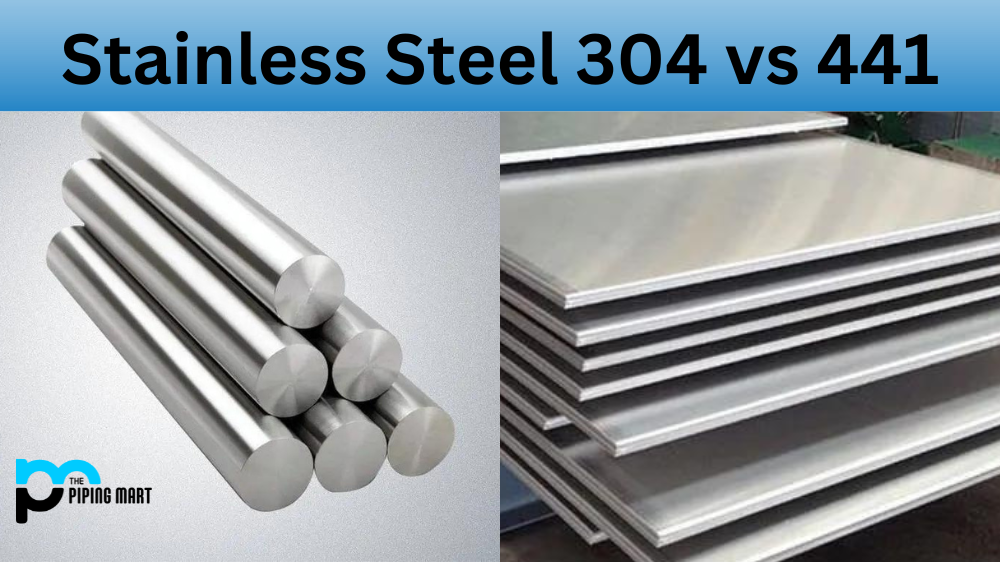Stainless steel is a popular material used in various applications due to its durability, corrosion resistance, and malleability. But within the stainless steel family, different grades have unique qualities. Let’s compare two of the most commonly used grades—304 and 441—and compare their properties.
304 Stainless Steel Properties
Stainless steel 304 is an austenitic grade that can be severely deep-drawn. It is one of the most widely used grades due to its versatility and ability to withstand harsh environments without corroding. This type of stainless steel also offers good mechanical properties with excellent weldability and formability. It is also non-magnetic, meaning it will not attract contaminants or other metals during welding or forming processes.
441 Stainless Steel Properties
441 stainless steel is a ferritic grade that provides good mechanical properties similar to 304-grade stainless steel but offers better corrosion resistance in certain environments. It typically contains less chromium than 304-grade stainless steel but offers improved oxidation resistance at high temperatures. In addition, it has better stress corrosion cracking resistance compared to other austenitic grades, such as 304 and 316-grade stainless steels. The downside to this type of stainless steel is that it cannot be deep-drawn due to its higher carbon content, making it more prone to cracking during cold working processes.
Difference Between Stainless Steel 304 and 441
Composition
The two grades of stainless steel, 304 and 441, have different chemical compositions. The main difference between these two grades is the amount of chromium and molybdenum. Stainless steel 304 contains 18% chromium and 8% molybdenum, while stainless steel 441 contains 16% chromium and 2% molybdenum.
Corrosion Resistance
Both grades of stainless steel are highly resistant to corrosion. However, stainless steel 441 is slightly more corrosion-resistant than stainless steel 304. This is due to the higher amount of chromium in stainless steel 441, which provides it with better oxidation resistance.
Strength
Stainless steel 441 is also slightly stronger than stainless steel 304. This is due to the higher amount of molybdenum in stainless steel 441, which increases its strength. However, both grades of stainless steel are still very strong and can be used in various applications.
Temperature Resistance
Both grades of stainless steel can withstand high temperatures without losing their properties. However, stainless steel 441 is better able to withstand high temperatures than stainless steel 304. This is due to the higher melting point of stainless steel 441, which allows it to withstand higher temperatures before beginning to melt.
Cost
Stainless steel 304 is typically more expensive than stainless steel 441. This is due to the higher amount of chromium in stainless steel 304, which makes it more expensive to produce. However, both grades of stainless steel are still relatively affordable and can be used in various applications.
Applications
Both grades of stainless steel are widely used in a variety of applications. Some common applications for each grade include:
- Stainless Steel 304: kitchen appliances, food processing equipment, sinks, automotive trim
- Stainless Steel 441: exhaust systems, boiler tubes
Conclusion:
When selecting stainless steel for your project, you should consider all factors, including environment, cost, and desired result, before deciding between 304 or 441-grade stainless steel. Both offer advantages depending on your application needs; while 441 grade provides better corrosion resistance in certain environments than 304 grade, it lacks the same level of deep drawing capability as 304 grade because of its higher carbon content making it more susceptible to cracking during cold working processes. When considering which type would best suit your application needs, always consult a professional knowledgeable in metal fabrication techniques before making any decisions regarding materials selection.

A passionate metal industry expert and blogger. With over 5 years of experience in the field, Palak brings a wealth of knowledge and insight to her writing. Whether discussing the latest trends in the metal industry or sharing tips, she is dedicated to helping others succeed in the metal industry.




